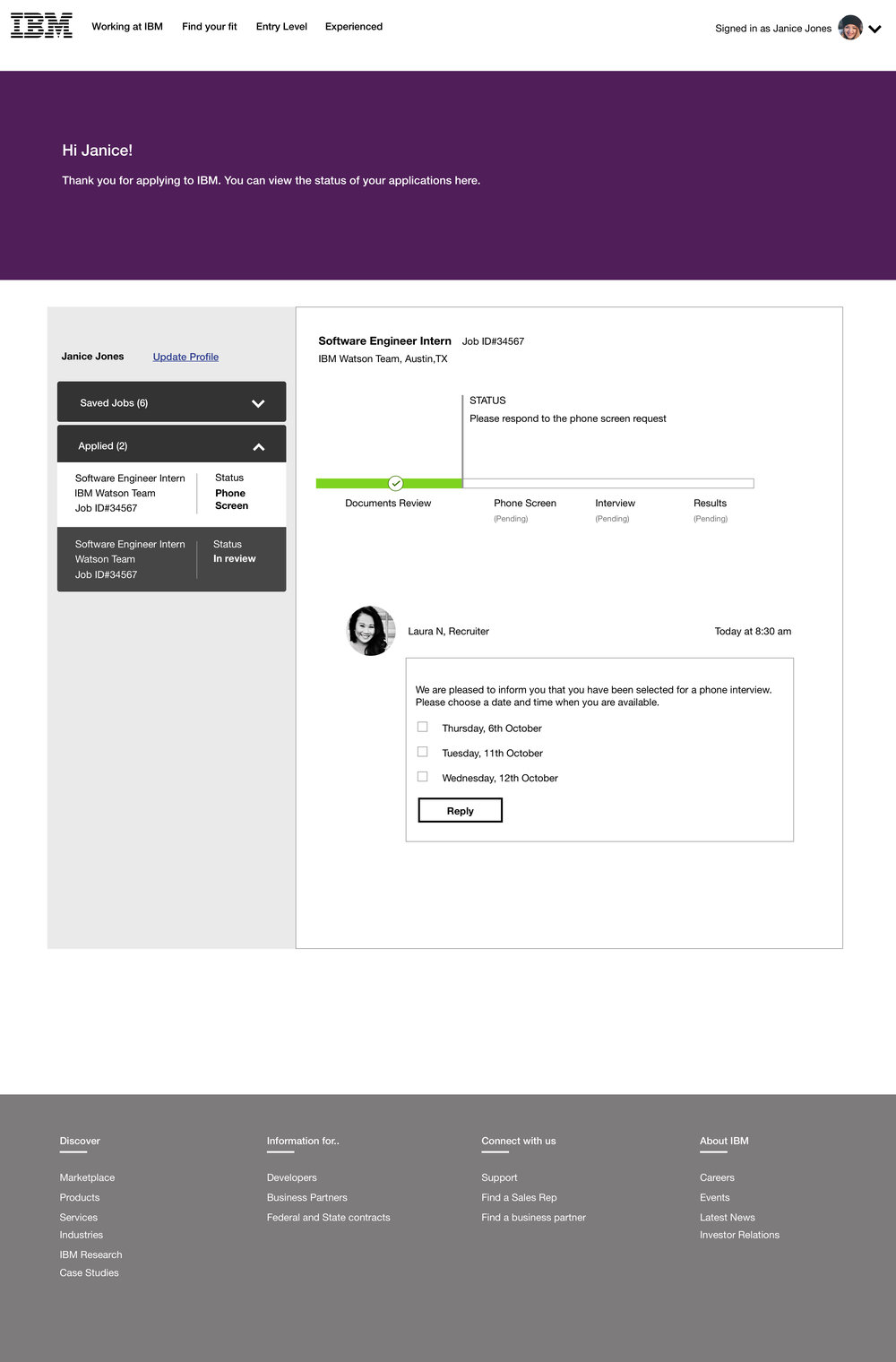Reimagining job applications

The Problem
The job application experience is painful, for both candidates and hiring teams.
As part of a pitch project, IBM asked us to reimagine the traditional hiring process. The current process takes weeks to complete, and receiving thousands of applications places a huge workload on hiring teams. In addition, candidates have to wait for weeks before receiving any answer- this causes a great deal of anxiety.
So, How do we design an experience that alleviates anxiety, and increases transparency?
My Role
Impact
The Design Process
Finding a job is hard. So is finding the right candidate.
Research Insights
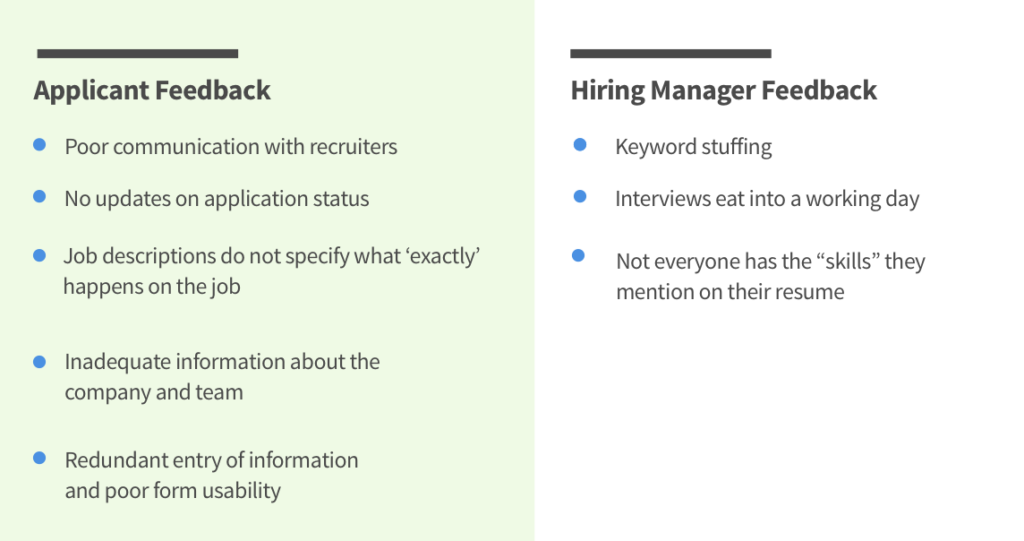
What do people want from IBM?
The interviews revealed different motivations for people to use a job application portal. It was interesting to note that people did not just care about the application, but rather the whole experience of applying. They wanted to know what the culture was like, what mentorship they would receive, what they would work on, and more. This was distilled into 2 clear personas.
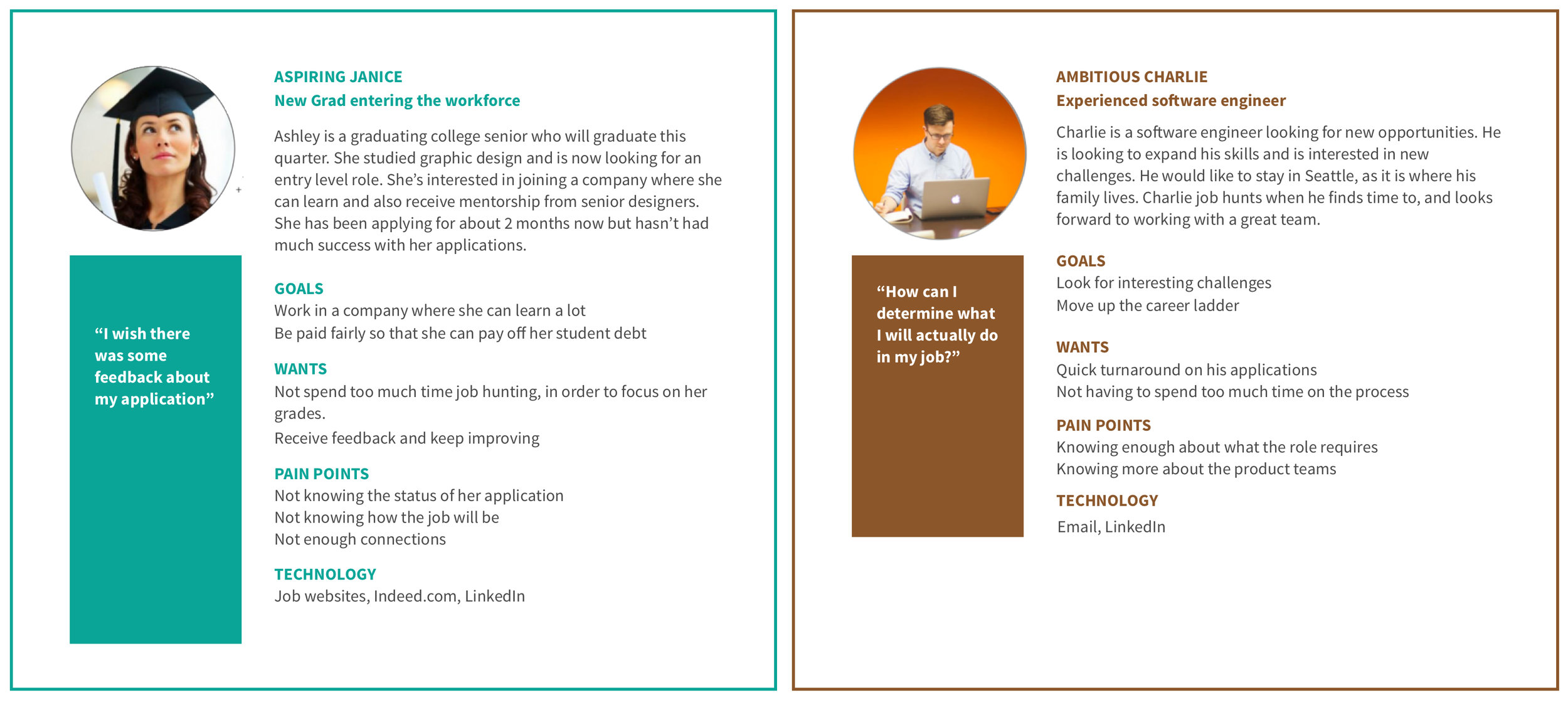
Defining Design Principles
- Friendly and personable
- Automate when needed
- Give feedback to the applicant
Visualizing the experience - Journey Maps
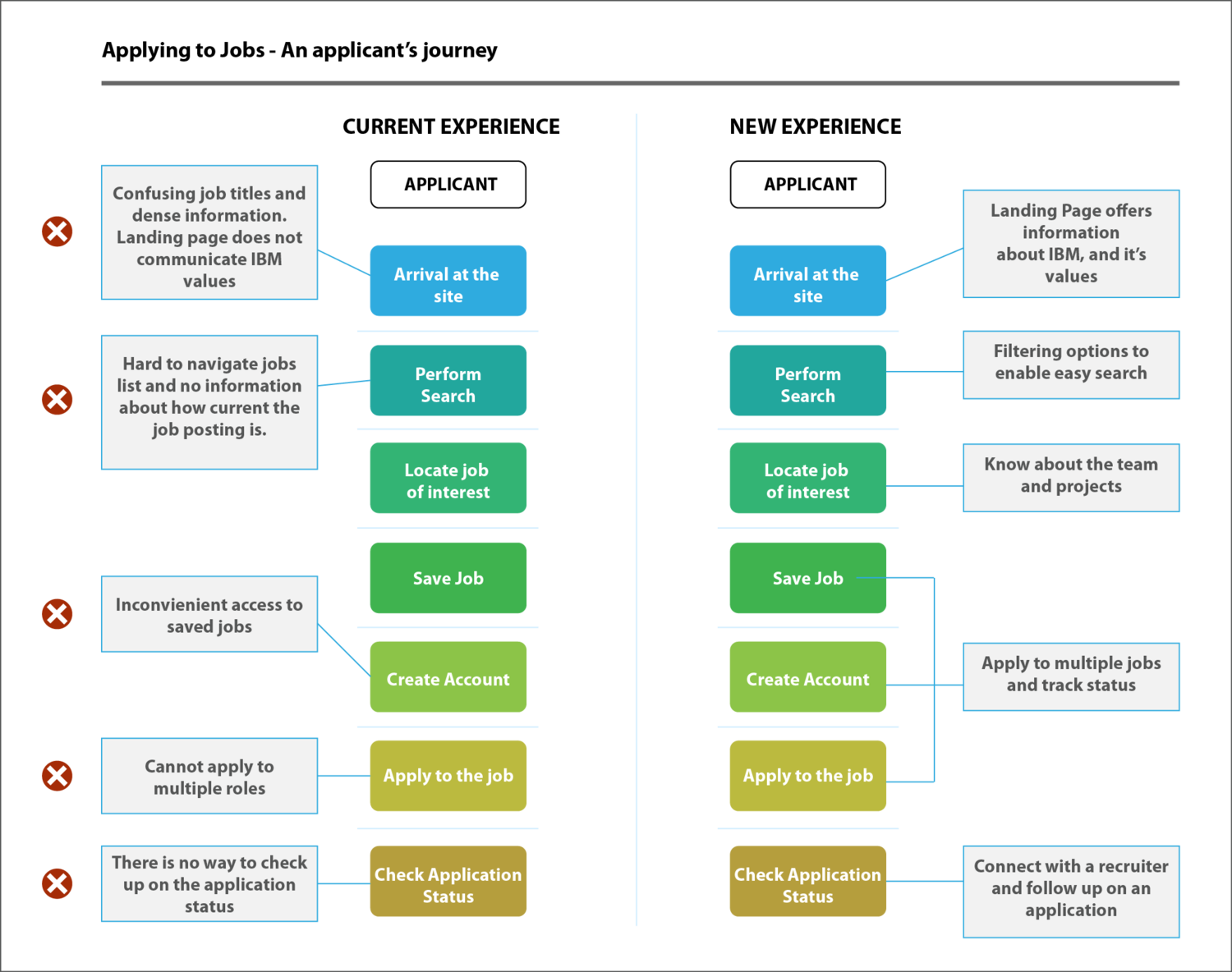
Initial Concepts
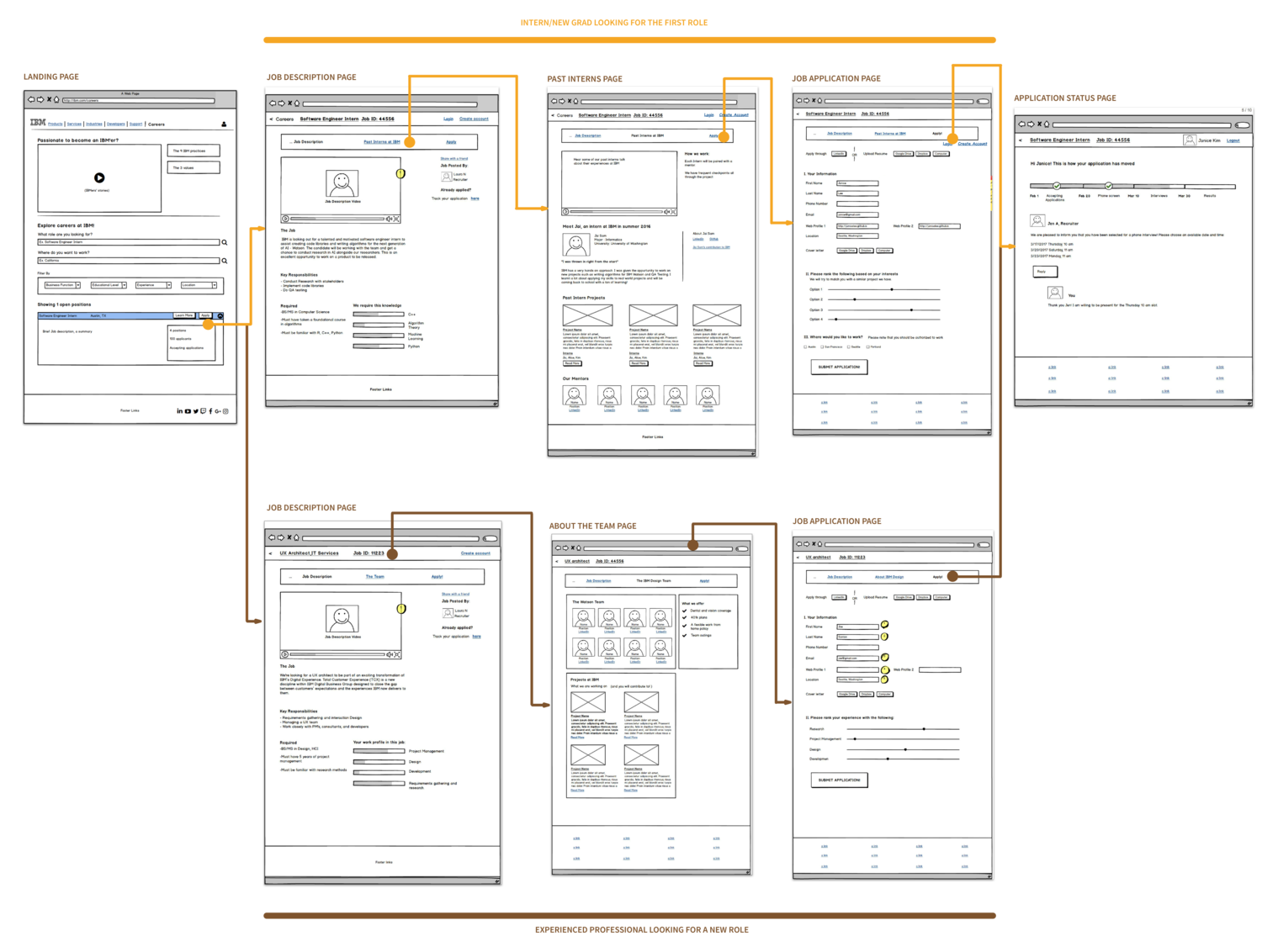

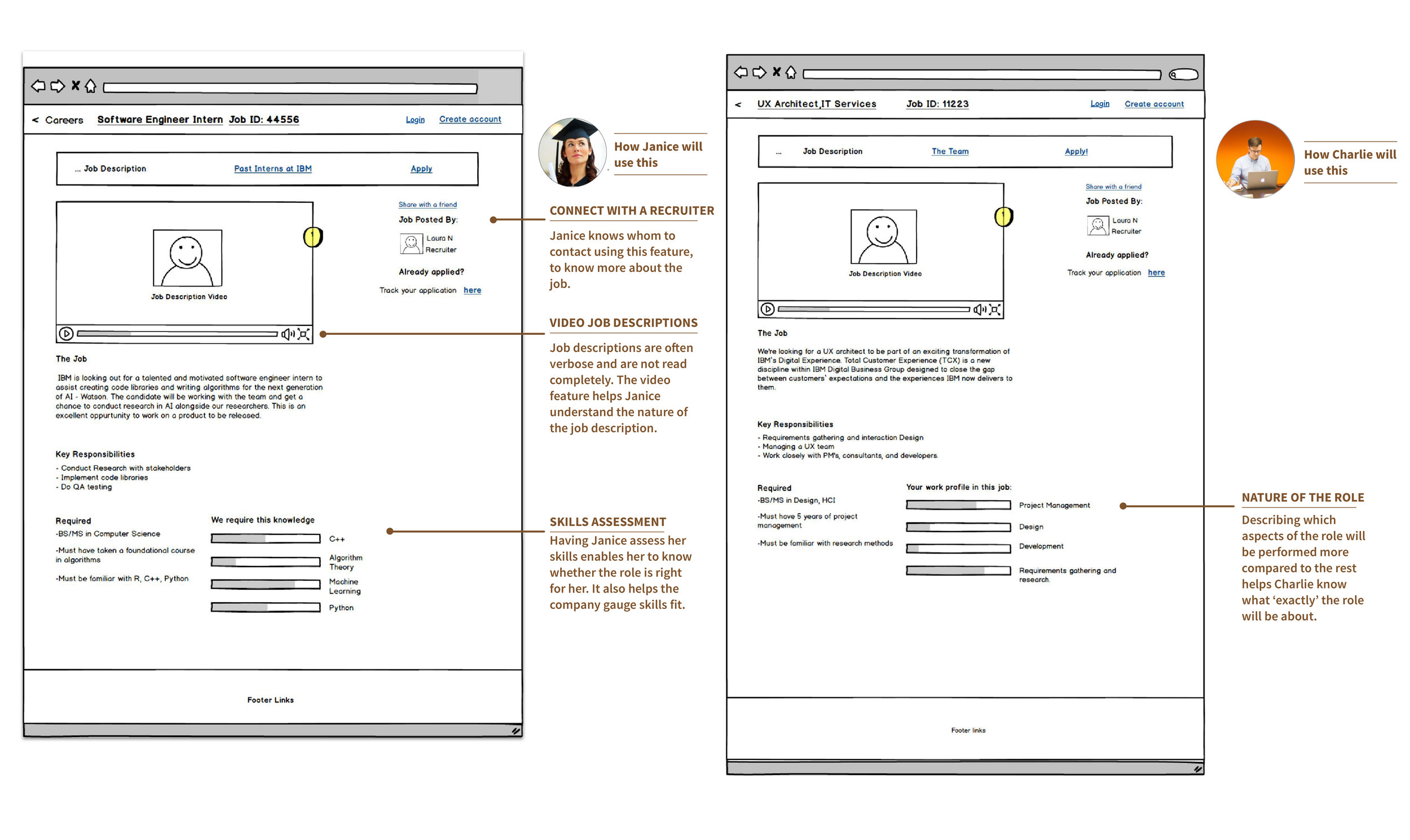
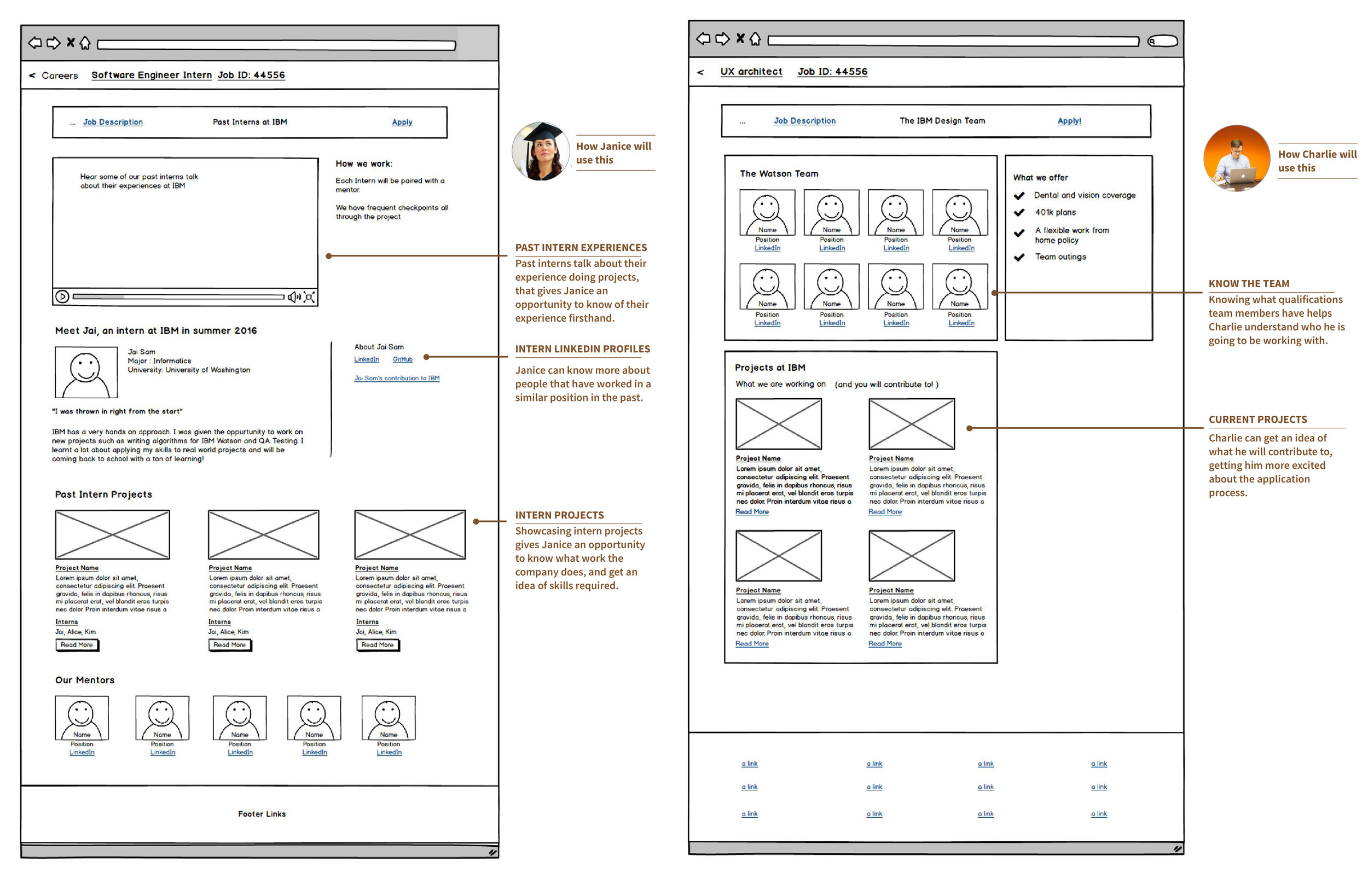
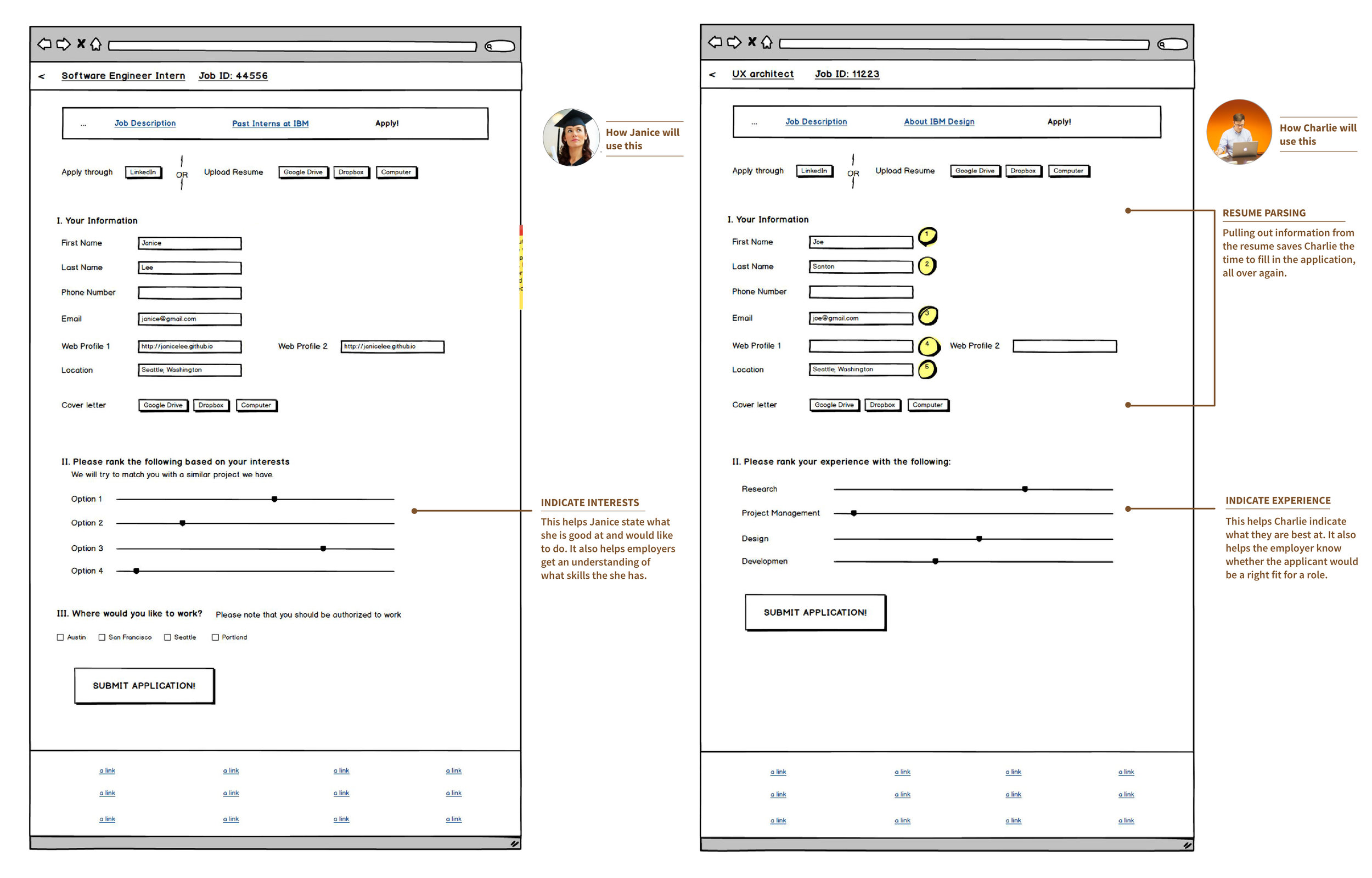

Final Design
Landing Page with clear calls to action
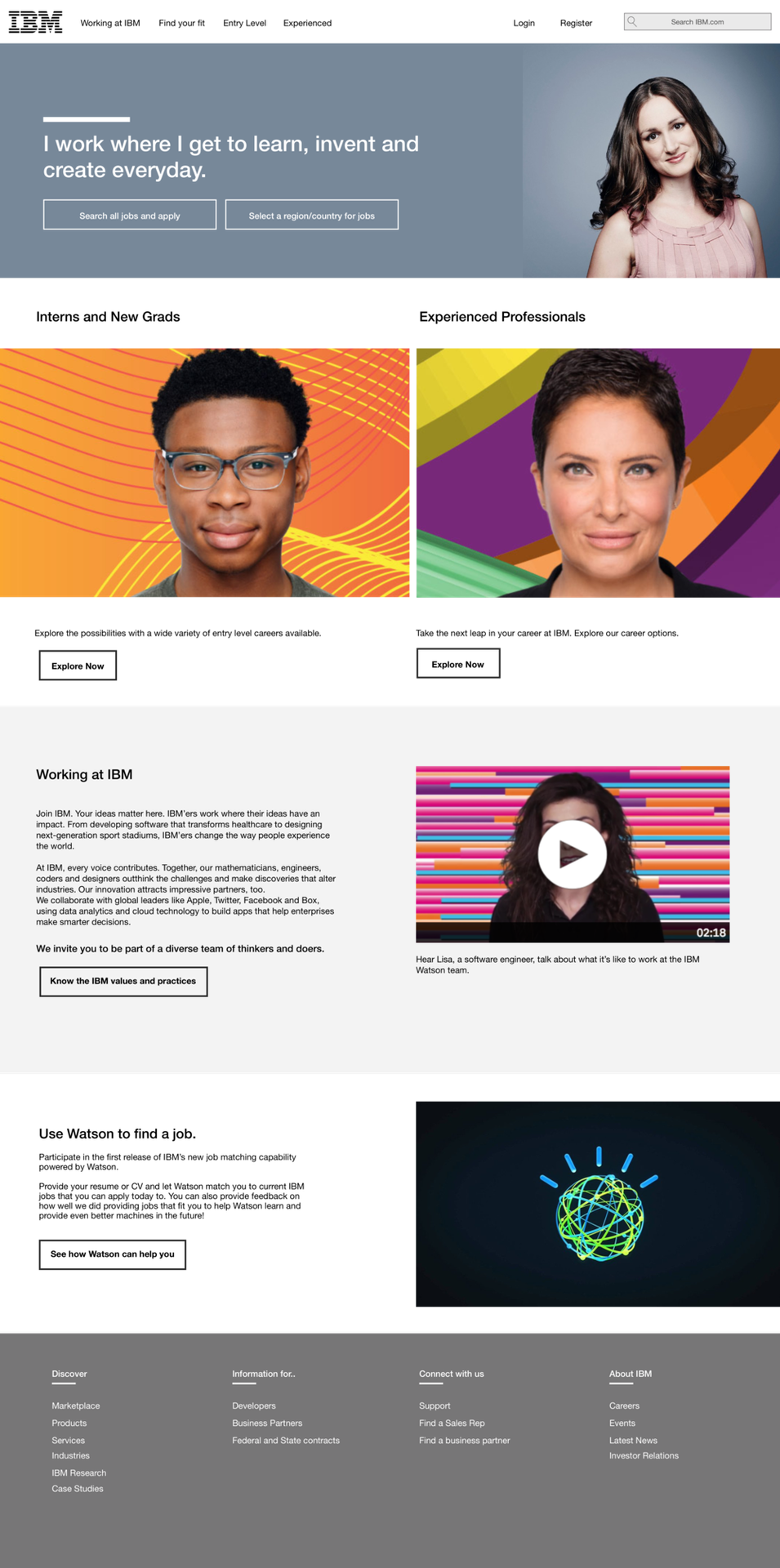
Easy Search and filter Options
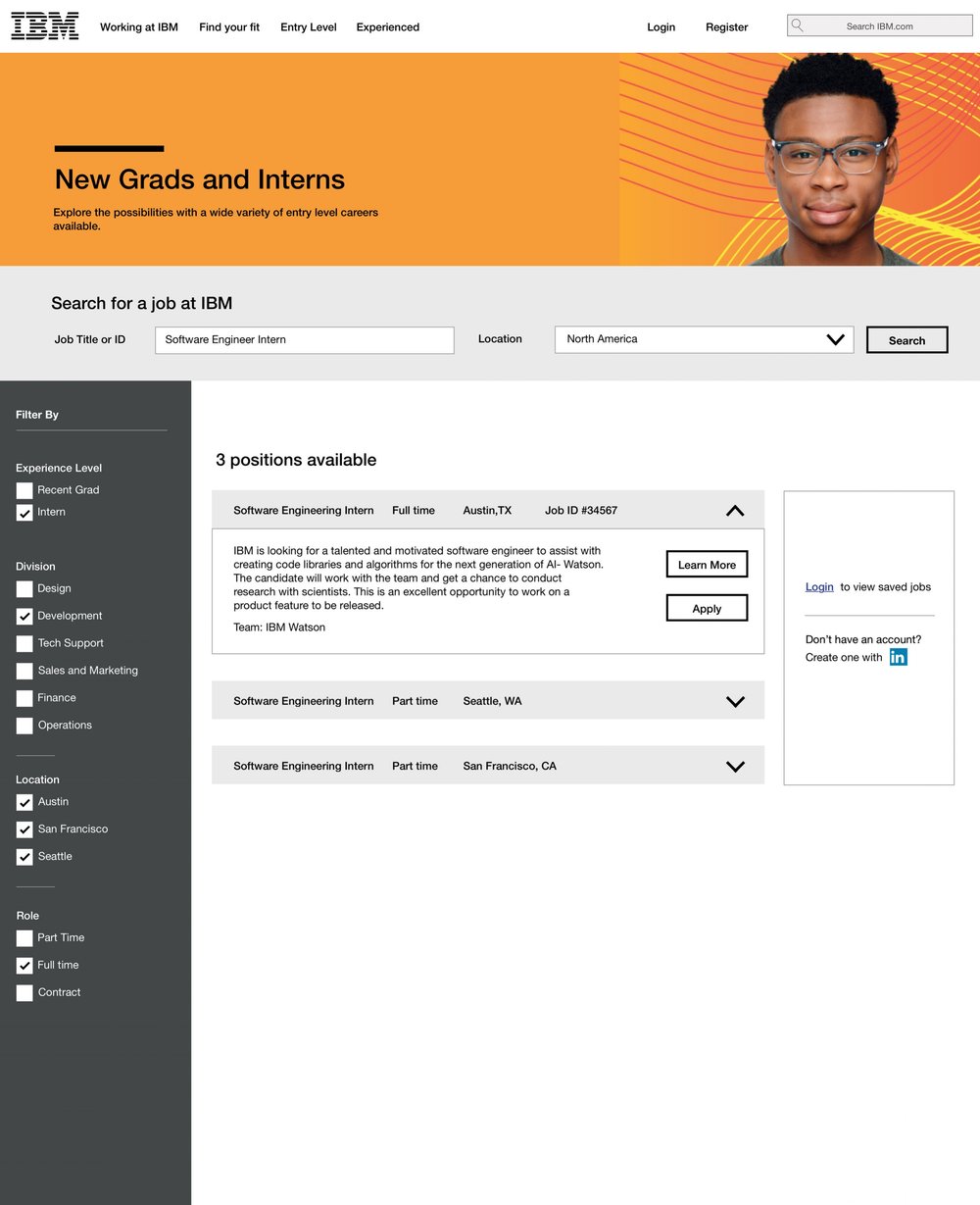
Job Descriptions that list the skills needed
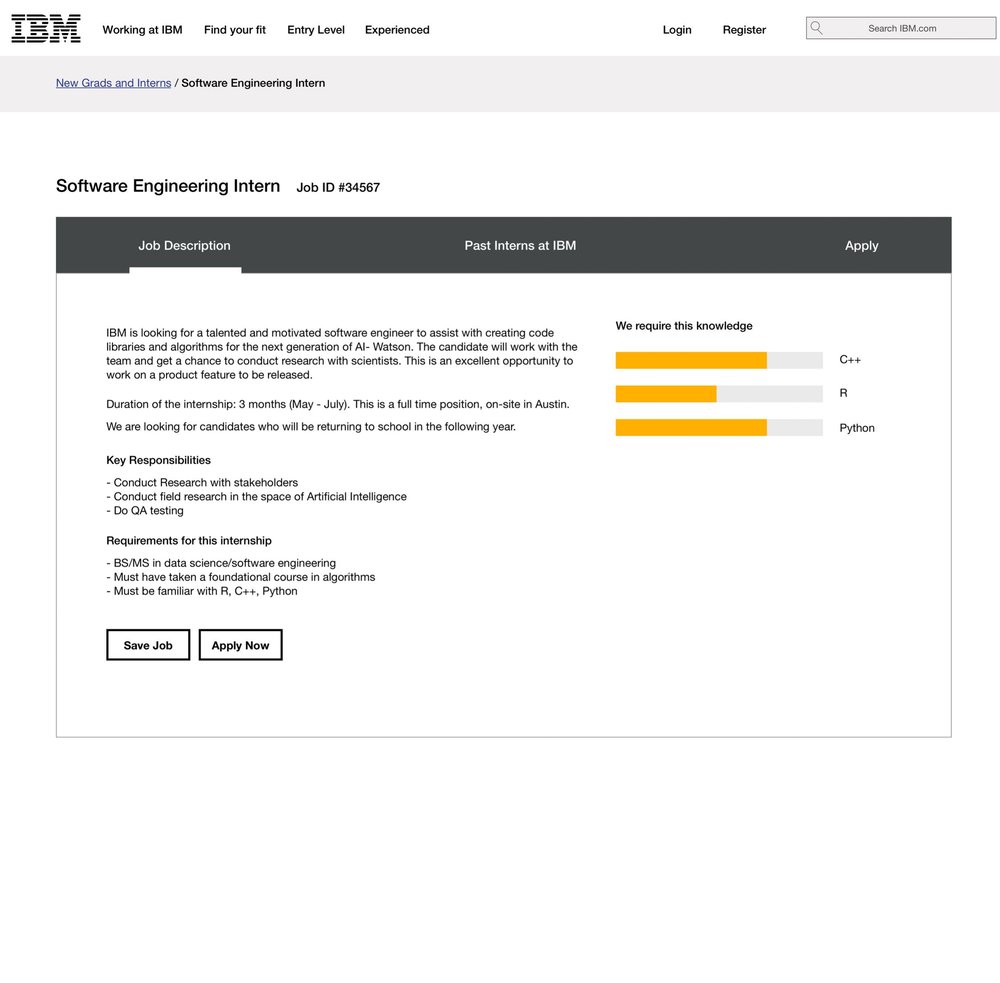
Know about projects and a company's culture
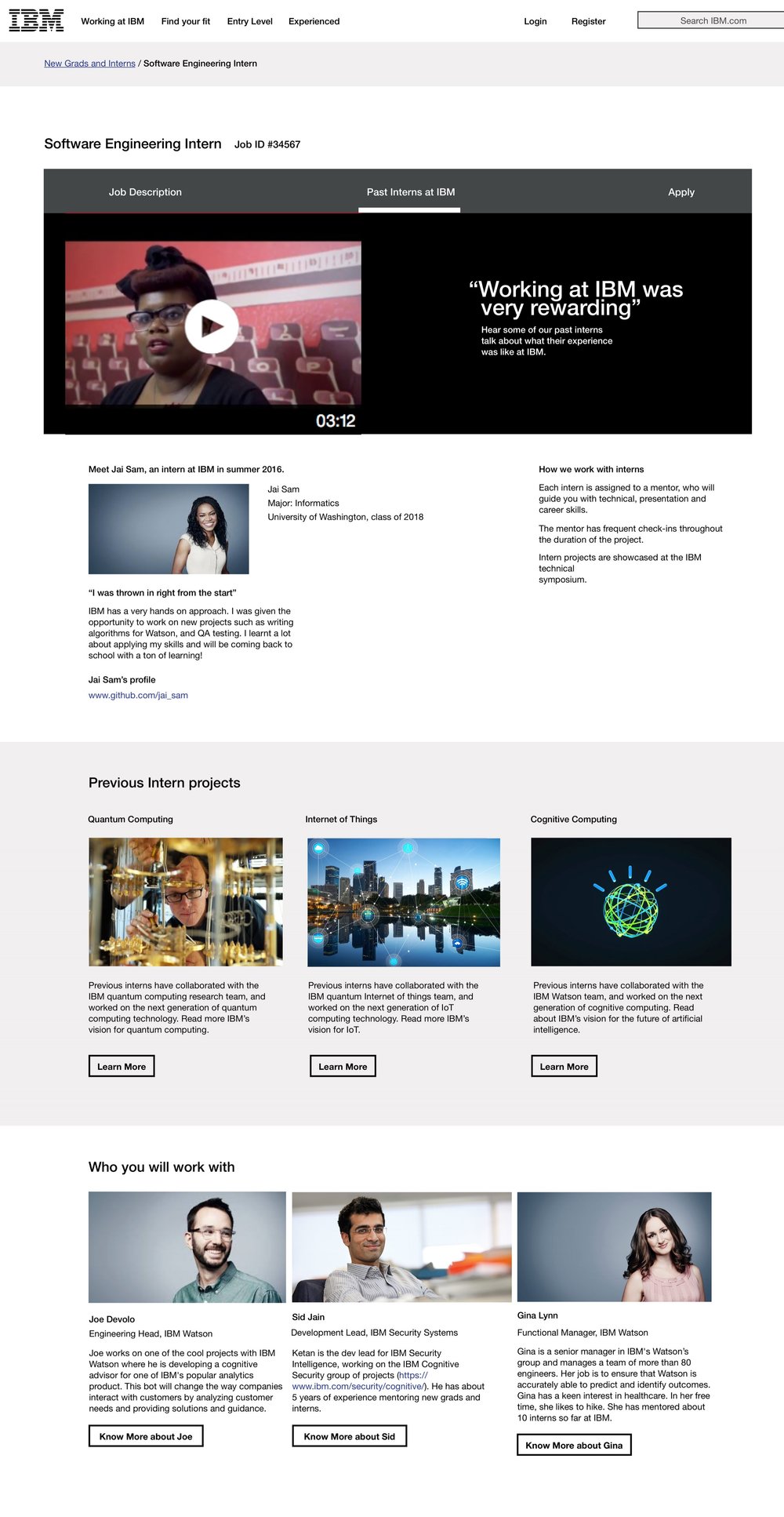
An automated application process, that prioritizes skills and experience
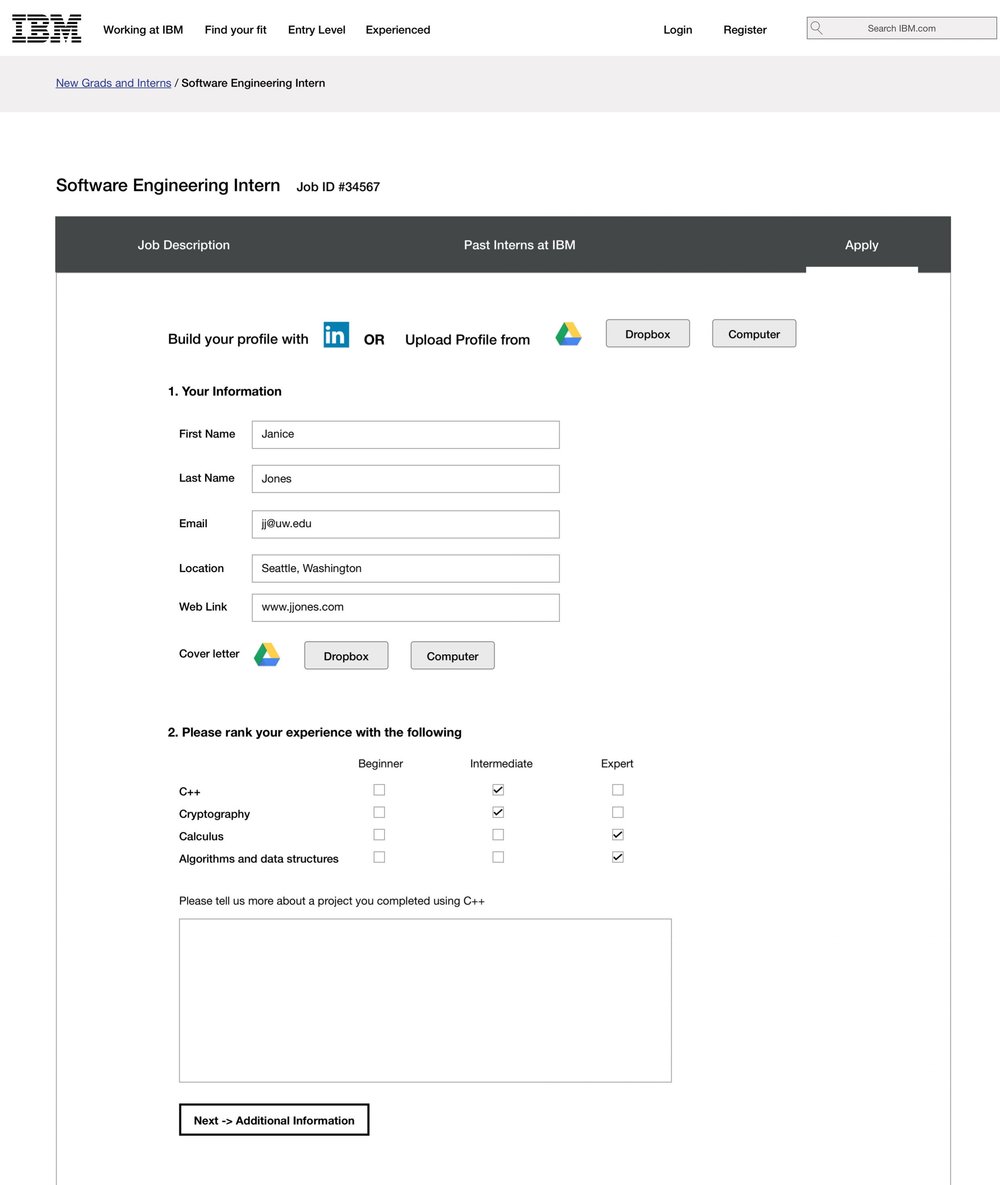
Confirmation of the job application
